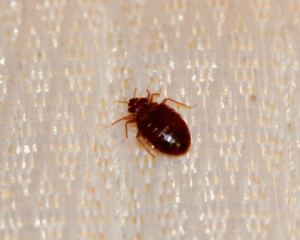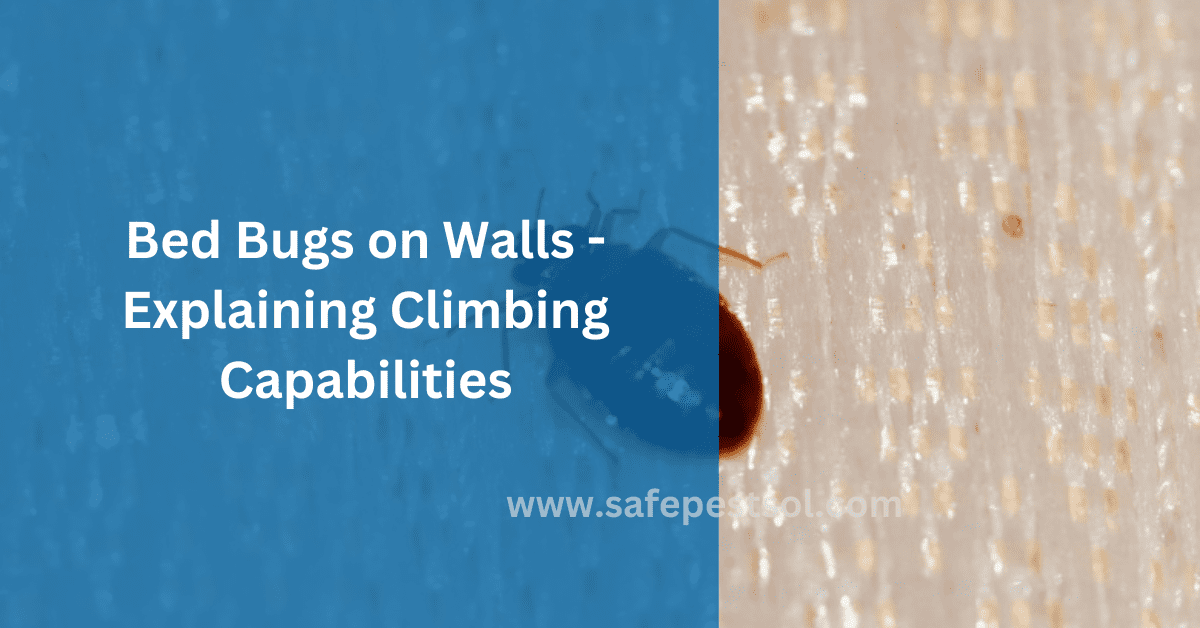Do Bed Bugs Crawl on Walls? Answering All Queries
Bed bugs are small, night-active insects characterized by their habit of hiding even in the tightest of openings. While these bugs are associated with bedding or furniture, many people ask about whether the pests can even crawl on the walls. The answer is yes; they can climb well, even wall, furniture, and ceiling-crawling.
So this post will look into how bed bugs climb, and hide, and ways to get rid of bed bugs infestation in walls.

Bed Bugs’ Climbing Capabilities – Detailed Explanation
Bed Bugs’ Anatomy
Knowing the anatomy of bed bugs will help you understand their ability to climb various surfaces. Such small insects have small, oval-shaped bodies that enable them to slide into cracks and crevices. Their reddish-brown exoskeleton is also flexible, allowing them to push through complex textures without much resistance.
Among their most valuable climbing equipment is the six legs. Their legs have minuscule hooks, ensuring a very strong grip on a wide variety of surfaces. This facilitates efficient movement on walls, furniture, and even ceilings.
Materials and Surfaces Bed Bugs Climb On
Bed bugs have specialized structures on their legs which enable them to move over numerous surfaces. They face no trouble while crawling across rough or coarse surfaces such as wood, fabrics, and paper.
They can do such activities easily because of the hooked features within their legs. They can also climb along smoother materials like plastic, metal, and glass, having limited movement.
Bed bugs don’t jump or fly like fleas. However, they are able to move quickly on walls and floors because they crawl. They often hide in cracks and crevices between walls, baseboards, or furniture frames, especially close to sleeping areas where they can feed at night.
Patterns and Behavior of Climbing
Bed bugs like different types of red bugs move in a special “stop-and-go” type of crawl. They move by spurts and do not proceed continuously. They are able to feel any differences in their environment, such as temperature, humidity, or the presence of some kind of obstruction.
They often climb up bedposts and furniture legs to reach their hosts during the night. They can hide in small gaps and crevices, which allow them to go undetected while still moving between different parts of an infested area.
How to Tell If There Are Bed Bugs in Your Walls
Bed bugs are experts at hiding. This is why it will be very hard to notice them behind the walls. However, noticing signs can be used as indicators of bed bugs.
Some of the best methods that were recommended by the EPA include using credit cards to probe for cracks or crevices where bed bugs might hide. If the card can pass through the wall and floor gaps, then there is a possibility of having bed bugs in the walls.
Can Bed Bugs Live in Walls?
Yes, they can live inside walls if they find cracks and crevices to hide in. Walls are a safe shelter for bed bugs to rest during the day before coming out at night to feed. They can hide behind electrical outlets, inside baseboards, or within gaps in older drywall or wooden panels.
Unlike newly built walls with fewer hiding spots, older walls with cracks and loose paneling are more prone to harboring bed bugs. Since bed bugs prefer tight spaces, they often settle in walls that provide access to their food source from different points.
Ways to Eliminate Bed Bugs in Walls
1. Inspect and Identify the Infestation
Thorough inspection is the first treatment process for a bed bug infestation. Inspect furniture, bedding, and wall crevices for bed bugs. Identification of all the affected areas is vital to successful treatment.
2. Contain the Bed Bugs
To stop infestation from spreading, seal items in plastic bags or airtight containers if they are infested. A mattress cover also traps bed bugs and prevents their escape.
3. Prepare the Area for Treatment
Vacuum all floors, furniture, and wall crevices well before treatment. Infested bedding and clothing must be washed in hot water and dried at a hot temperature. Sealing any cracks or crevices in walls reduces their ability to hide.
How Long Can Bed Bugs Live in Walls?
Bed bugs are not capable of hiding in the walls forever as they require food to live. However, they may survive for longer periods without ingesting a blood meal. Depending on temperature and humidity levels, this survival ranges from 20 to 400 days.
However, despite their survival period without feeding, the insects will at some point need to start coming out of their hiding spots in search of a food source. This requires regular inspections and treatments that will ensure they do not come back.
Can I Use Heat Treatment to Kill Bed Bugs in Walls?
Yes, one of the most effective methods of killing bed bugs inside walls is through heat treatment. Since extreme heat can kill bugs, professional heat treatments ensure that temperatures inside a home reach such levels that kill all bed bugs no matter where they hide.
Although heat treatment can be expensive and time-consuming, it guarantees the complete elimination of bed bugs in all areas, such as walls, furniture, and bedding.
Final Thoughts
Bed bugs crawl over walls and squeeze into holes in the walls without much hassle when moving to rooms. If you need control over them, their abilities to climb can make it difficult for you. With proper knowledge about these creatures, you can stop them before infestation.
FAQs
1.Do bed bugs crawl over walls or ceilings?
Yes, bed bugs can do that easily. They use tiny hooks on their legs for a strong grip while moving on wall and ceiling surfaces.
2.Is there any bug hiding in my walls?
Look for signs like small blood stains, fecal spots, shed skin, or cracks in the wall, which can be their hiding spots.
3.Can bed bugs live inside walls permanently?
No, bed bugs must come out of their hiding spot to feed but can retreat back for weeks or even months if a host is present in the room.
4.What is the best method to eliminate bed bugs from the walls?
You can use insecticides and dust treatments and seal the cracks so they cannot hide in and spread further.
5.Does heat treatment kill the bed bugs hiding inside the walls?
Yes, the process of heat treatment is extremely effective in killing bed bugs within an entire house, including the walls.
Are Bed Bugs Bothering You?
If yes, you might need our expertise. With years of expertise, our team always ensures no bugs remain hidden in your home, bedding, or even walls. So, what are you waiting for? Call us right now!

